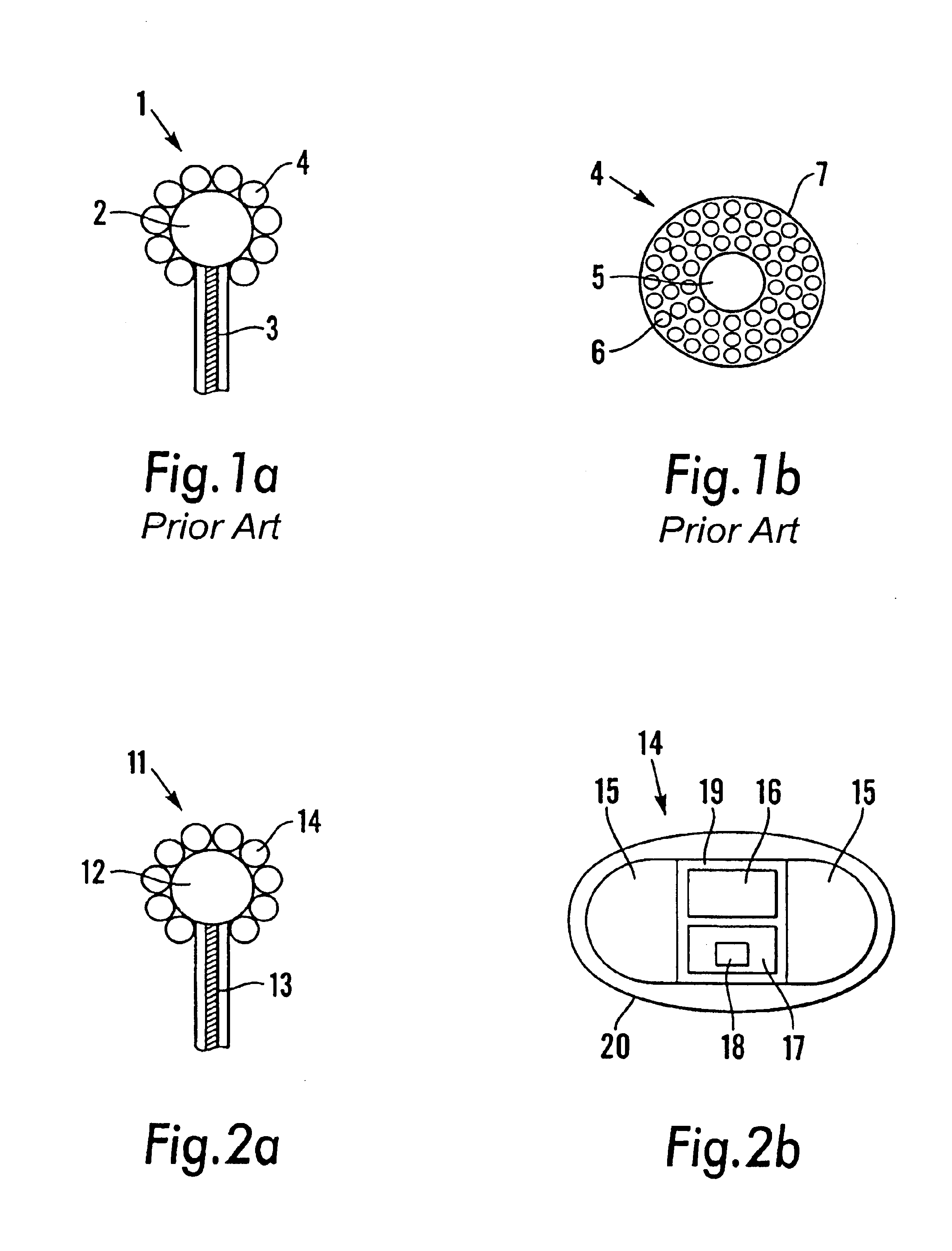Fireworks device
a firework and device technology, applied in the direction of fireworks, lighting and heating apparatus, weapons, etc., can solve the problems of not necessarily igniting all stars, affecting the use of fireworks, and a major fire risk of fireworks during us
- Summary
- Abstract
- Description
- Claims
- Application Information
AI Technical Summary
Benefits of technology
Problems solved by technology
Method used
Image
Examples
Embodiment Construction
In FIG. 1a an illustration is given of how a fireworks device, or more specifically a fireworks projectile, can be constructed according to the prior art. The projectile 1 consists of a booster charge 2, a fuse 3 and a number of firework stars 4. When it is used the projectile 1 is fired into the air by a lifting charge (not illustrated). The lifting charge may be installed in and accompany the firework, if the firework is of the rocket type, or the lifting charge may be installed in a launching device on the ground. In both cases the fuse 3 is lit during launching, and after a period of time, which is determined by the fuse's burning time, the booster charge 2 is fired. This firing causes preferably all the stars 4 to be ignited, and they are scattered at an exit velocity and direction before falling to the ground.
FIG. 1b is a principle illustration of the construction of a traditional pyrotechnic firework star. The star 4 consists of a core 5 of glass or metal, e.g. lead or iron. ...
PUM
 Login to View More
Login to View More Abstract
Description
Claims
Application Information
 Login to View More
Login to View More - R&D
- Intellectual Property
- Life Sciences
- Materials
- Tech Scout
- Unparalleled Data Quality
- Higher Quality Content
- 60% Fewer Hallucinations
Browse by: Latest US Patents, China's latest patents, Technical Efficacy Thesaurus, Application Domain, Technology Topic, Popular Technical Reports.
© 2025 PatSnap. All rights reserved.Legal|Privacy policy|Modern Slavery Act Transparency Statement|Sitemap|About US| Contact US: help@patsnap.com


